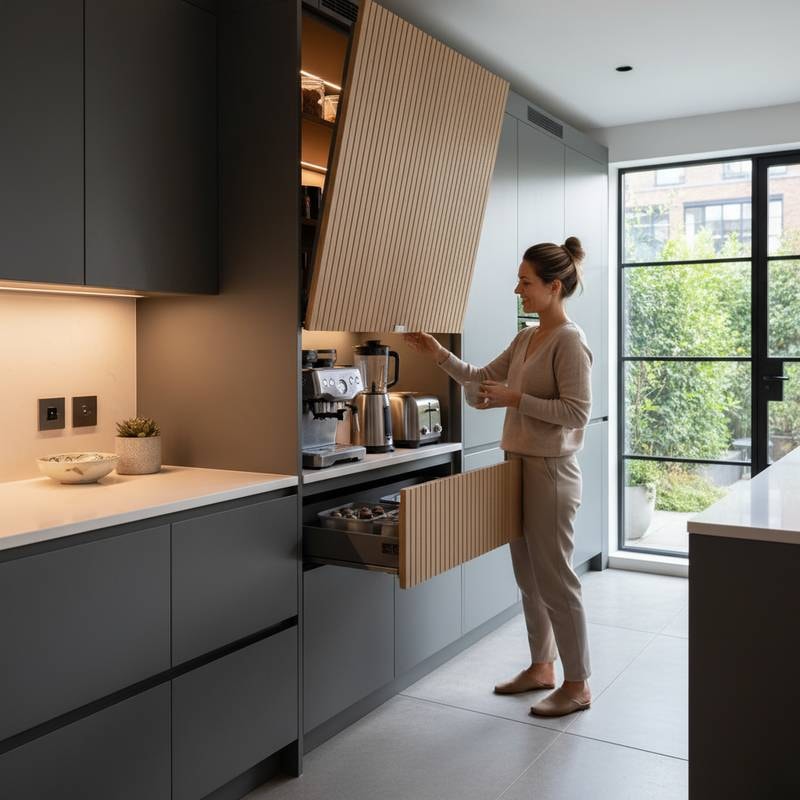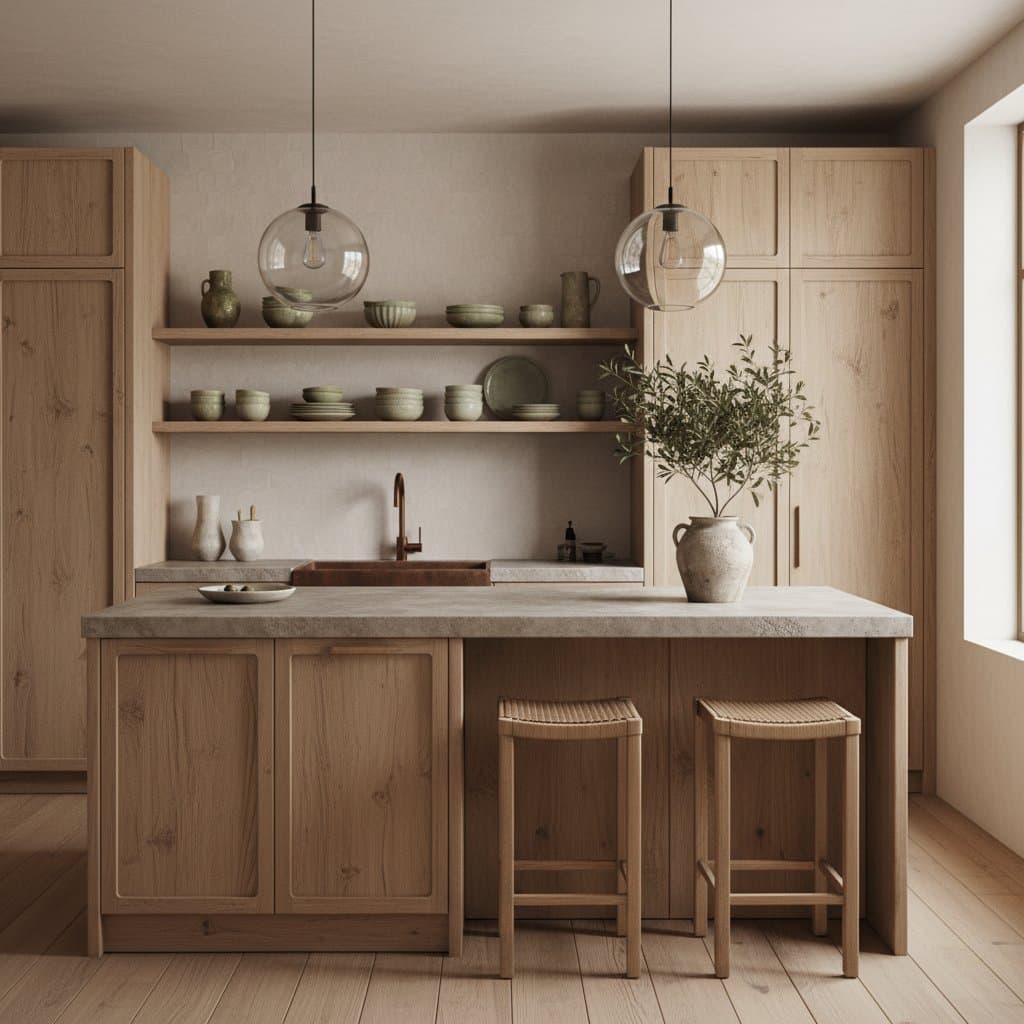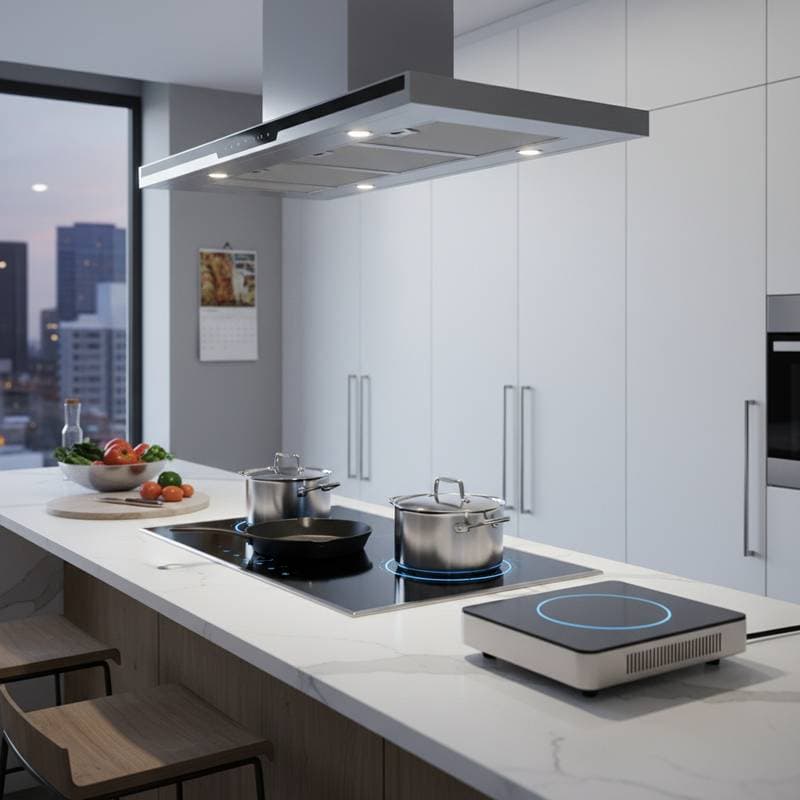Appliance Garages: Essential for Organized Kitchens in 2025
One recognizes the frustration of mornings disrupted by competing appliances on limited counter space. A coffee maker occupies prime real estate, while a toaster and blender crowd the area, transforming a tidy surface into an improvised display. This scenario prompts the need for innovative storage that preserves functionality.
Appliance garages address this challenge effectively. These integrated cabinets conceal small appliances within the kitchen layout, ensuring quick retrieval without compromising surface area. Proper implementation restores order, simplifies routines, and imparts a refined aesthetic to the space.
The following sections detail the mechanics of appliance garages, design considerations, financial aspects, functional advantages, and implementation strategies.
Understanding Appliance Garage Mechanics
An appliance garage functions as a dedicated enclosure integrated into the countertop or upper cabinetry. It incorporates access mechanisms that prioritize convenience, such as upward-lifting panels or retractable barriers, to facilitate use without encroaching on adjacent workspace.
Designers offer several configurations to accommodate varied kitchen dimensions and preferences:
- Tambour Doors: Constructed from interlocking slats of wood or metal, these doors retract vertically into a compact channel. Such systems excel in confined areas, avoiding protrusion into walkways.
- Lift-Up Doors: Equipped with pneumatic lifts or hinges, these panels rise and secure overhead, ideal for vertical stacking of multiple devices.
- Pocket Doors: Panels that pivot outward briefly before gliding into side compartments, this style delivers unobstructed access while maintaining a streamlined profile.
Selection depends on spatial constraints and stylistic goals. Tambour options suit minimalist environments with their smooth operation, whereas pocket doors align with classic cabinetry traditions. Lift-up variants enhance modern setups by minimizing visible hardware.
Financial Considerations and Budget Strategies
Costs for appliance garages vary based on scale, materials, and complexity, allowing adaptation to different financial plans.
- Basic Retrofit or DIY Approach: Ranges from $150 to $500. Prefabricated modules or add-on kits enable modifications to existing cabinets, appealing to those proficient in woodworking.
- Custom Mid-Tier Integration: Falls between $600 and $1,200. Professionals tailor the unit to blend seamlessly with current fixtures, optimizing harmony.
- High-End Bespoke Installations: Exceeds $1,500, potentially reaching $3,000. Features encompass premium veneers, automated lifts, interior illumination, and electrical outlets for powered appliances.
Incorporating these elements during a full kitchen renovation minimizes expenses compared to post-construction alterations. Budget-conscious individuals benefit from assessing material durability, such as solid maple for longevity or laminate for affordability.
Functional Advantages Extending to Daily Use
The aesthetic enhancement of appliance garages proves compelling, yet their utility extends to practical improvements in kitchen operations.
- Streamlined Workflow: Appliances remain connected to power sources, eliminating the need for repeated plugging and unplugging.
- Enhanced Durability: Enclosures shield devices from airborne particles, cooking residues, and unintended liquids, prolonging operational life.
- Simplified Maintenance: Reduced surface clutter accelerates cleaning processes, focusing efforts on essential areas.
- Property Value Increment: Prospective buyers value kitchens equipped with intelligent storage, signaling thoughtful design and usability.
These elements collectively foster a more productive and pleasant environment. For instance, a family relying on frequent blending or toasting experiences fewer interruptions, allowing focus on culinary tasks.
Design Integration for Optimal Results
Effective appliance garages harmonize with overall kitchen architecture. Consider appliance dimensions—standard coffee makers measure approximately 12 inches wide—when allocating internal shelving. Vertical dividers prevent tipping, while adjustable trays accommodate varying heights.
Aesthetic alignment proves crucial. Match door finishes to surrounding cabinetry, opting for matte black hardware in industrial themes or brushed nickel in transitional styles. Incorporate soft-close mechanisms to reduce noise in open-plan homes.
For enhanced functionality, integrate outlets within the compartment to support charging. LED strips illuminate contents, aiding visibility during early mornings or evenings. These details elevate the garage from mere storage to a sophisticated feature.
Steps to Implement an Appliance Garage
Begin by evaluating current usage patterns. Catalog appliances requiring frequent access, such as mixers or microwaves, and map potential installation zones near preparation areas.
Precise measurements guide feasibility—aim for at least 18 inches of depth to house most devices. Consult certified cabinet specialists to sketch prototypes aligned with your vision and constraints.
DIY enthusiasts source ready-to-assemble kits from hardware suppliers, requiring tools like a drill and level for secure mounting. Professional services ensure code compliance, particularly for electrical integrations.
Upon completion, test accessibility and adjust as needed. This investment yields lasting efficiency, transforming chaotic counters into purposeful spaces that support modern lifestyles.










